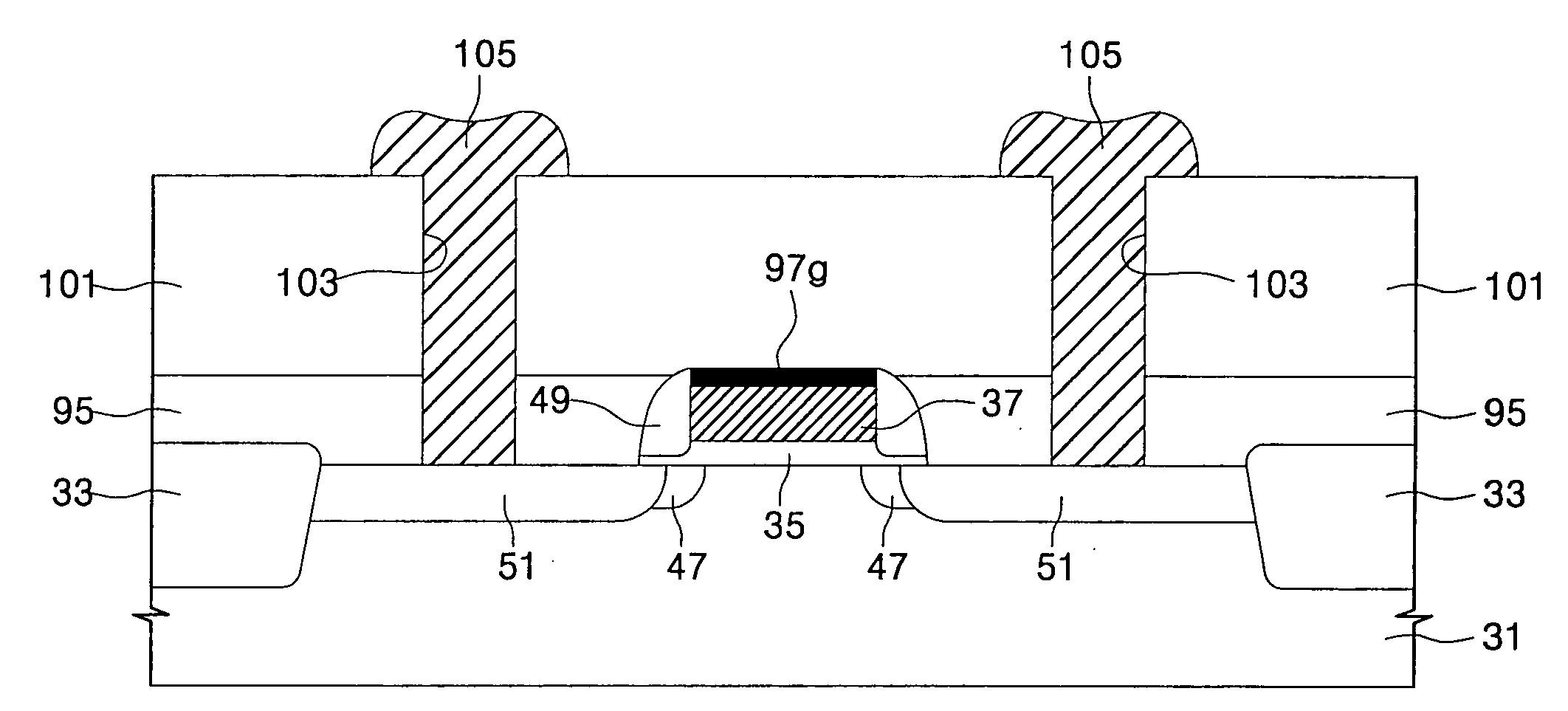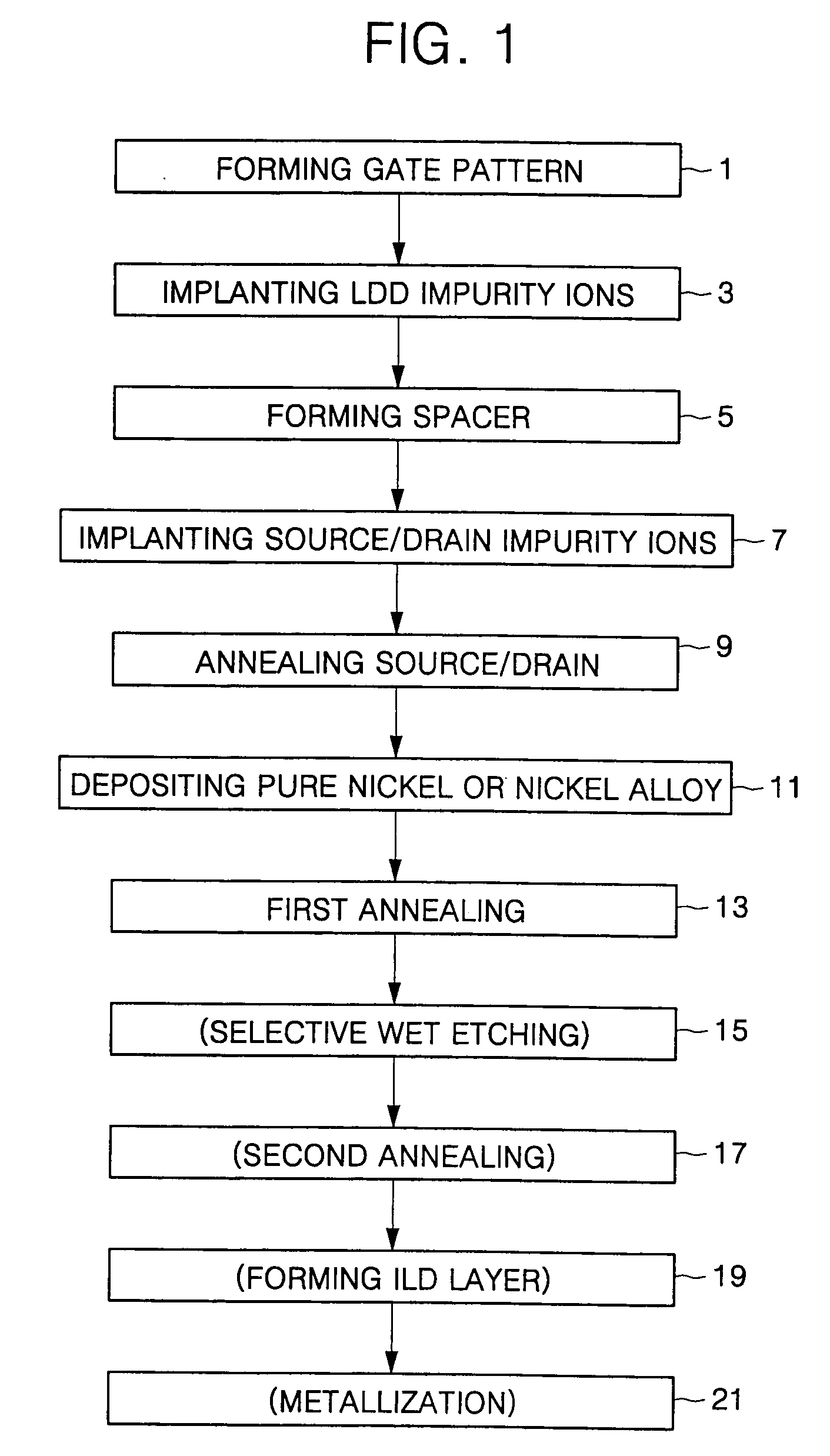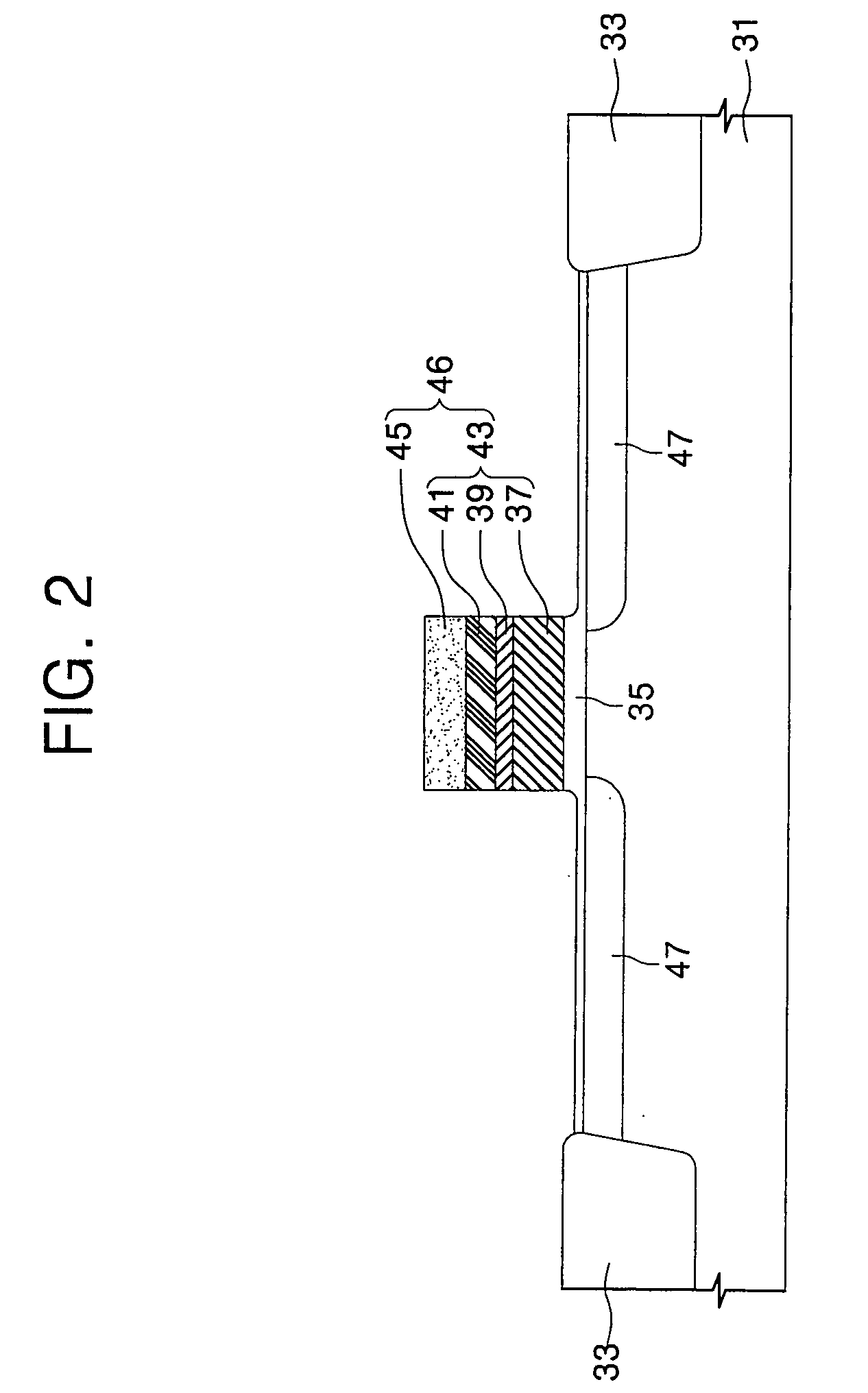Nickel salicide processes and methods of fabricating semiconductor devices using the same
a technology of nickel salicide and process, applied in the direction of semiconductor devices, basic electric elements, electrical apparatus, etc., can solve the problems of reducing the drivability of the short-channel mos transistor, narrowing the width increasing the electrical resistance of the gate electrode, so as to enhance the thermal stability of the mono-nickel mono-silicide layer
- Summary
- Abstract
- Description
- Claims
- Application Information
AI Technical Summary
Benefits of technology
Problems solved by technology
Method used
Image
Examples
Embodiment Construction
[0047] The present invention will now be described more fully hereinafter with reference to the accompanying drawings, in which preferred embodiments of the invention are shown. This invention may, however, be embodied in different forms and should not be construed as limited to the embodiments set forth herein. Rather, these embodiments are provided so that this disclosure will be thorough and complete, and will fully convey the invention to those skilled in the art. In the drawings, the thicknesses and relative dimensions of layers and regions may be exaggerated for clarity. Like numbers refer to like elements throughout the drawings and specification.
[0048]FIG. 1 is a process flow chart illustrating nickel salicide processes and methods of fabricating a semiconductor device using the same in accordance with embodiments of the present invention, and FIGS. 2 to 7 are cross-sectional views for explaining the nickel salicide processes and methods of fabricating a semiconductor devic...
PUM
 Login to View More
Login to View More Abstract
Description
Claims
Application Information
 Login to View More
Login to View More - R&D
- Intellectual Property
- Life Sciences
- Materials
- Tech Scout
- Unparalleled Data Quality
- Higher Quality Content
- 60% Fewer Hallucinations
Browse by: Latest US Patents, China's latest patents, Technical Efficacy Thesaurus, Application Domain, Technology Topic, Popular Technical Reports.
© 2025 PatSnap. All rights reserved.Legal|Privacy policy|Modern Slavery Act Transparency Statement|Sitemap|About US| Contact US: help@patsnap.com



